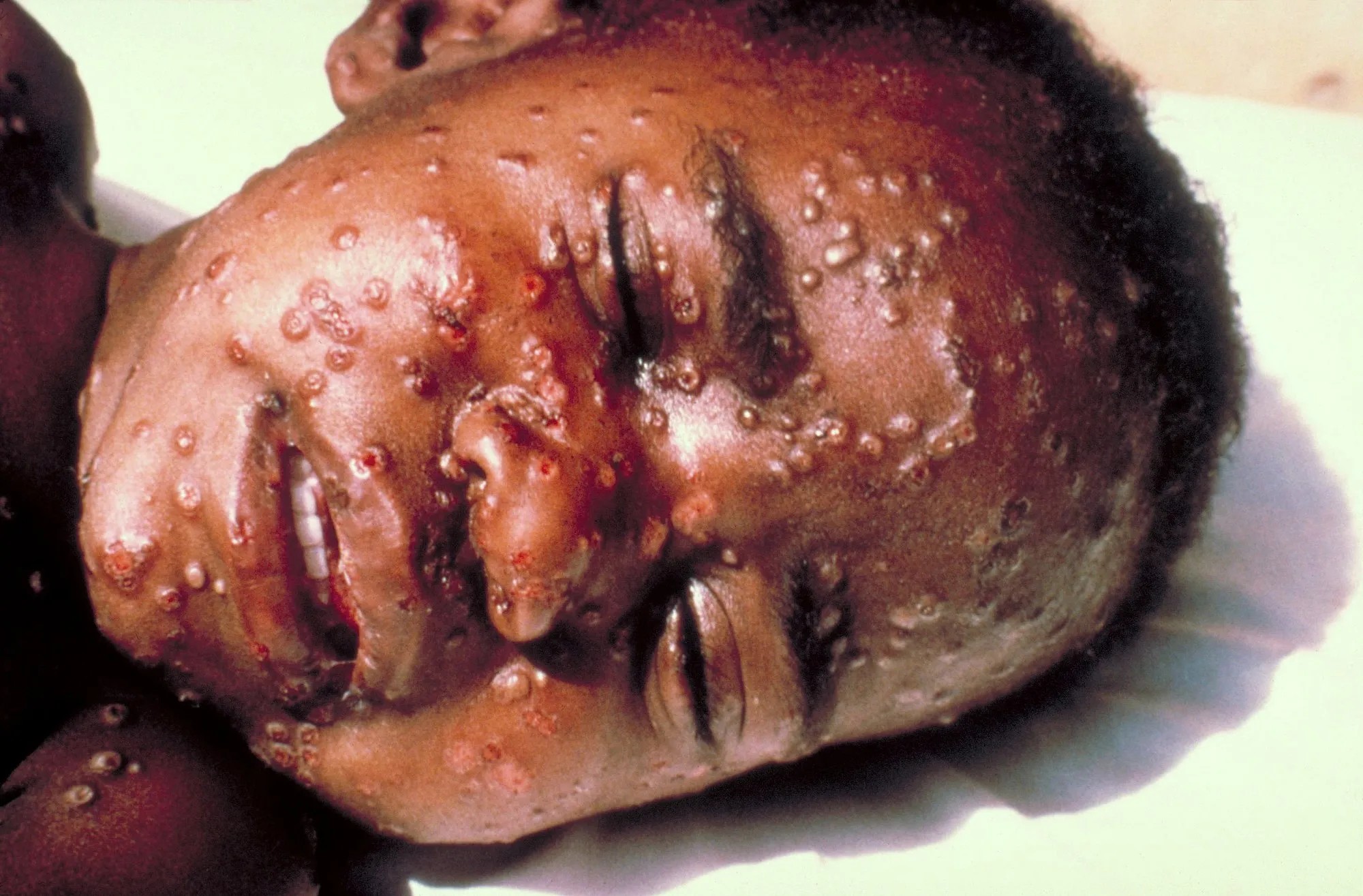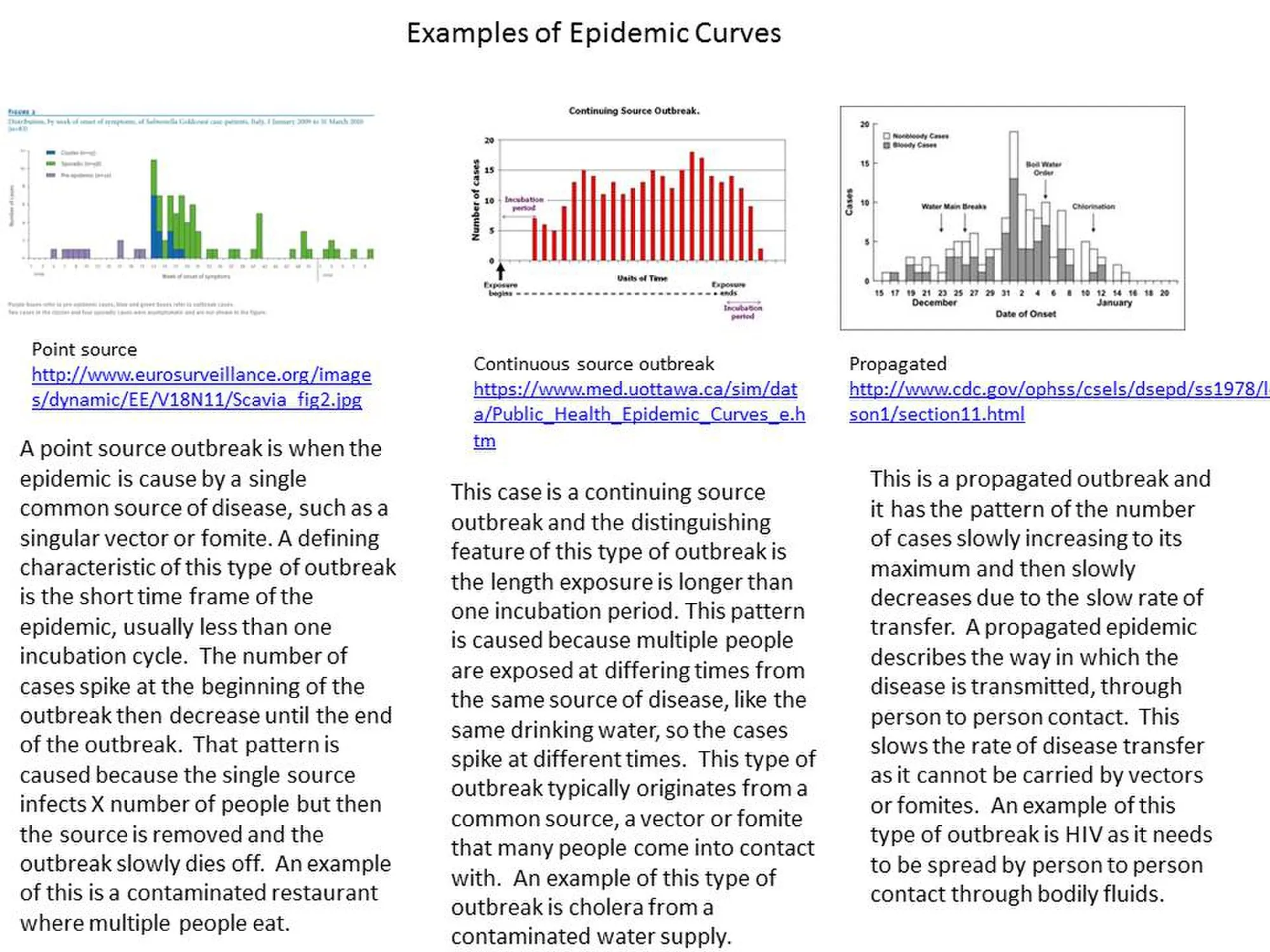Today's discussion centers around the use of some dangerous and highly infectious microorganisms in various ways that can affect human existence. As we go deeper into our discussion, I intend to critically expose most of these pathogens and give insight into how dangerous they can be if exposed to the environment. Sit tight and enjoy, for sure, there is more to learn. Let's begin by having a better understanding of what terrorism is and this time, in relation to a biological perspective.
Terrorism is simply the deliberate use of, or threatened use of violence to achieve any planned objectives, and this act is mostly carried out by a terrorist or its groups. Terrorism is mainly classified or named depending on the nature of what is used to execute it, the intent behind the act, or the location. For example, a terrorist act executed in one's locality can be termed domestic terrorism while if the internet is used, then it is referred to as cyberterrorism.
When it concerns the use of biological agents to execute a terrorist attack, it is referred to as Bioterrorism. There are various biological agents that can be used in bioterrorism. The notable ones are usually viruses and bacteria. When these biological agents are intentionally released with the intent to cause death, disability, or to a greater extent death to humans, plants, and animals, then it is referred to as Bioterrorism.
So in a nutshell, bioterrorism is an act. On the other hand, the particular agent known to cause the destructive and fatal effects on the target is known as Bioweapon. They generally include viruses, bacteria, toxins, fungi and more. In general, any microorganisms or virus capable of infecting and causing disease in people, animals or plants is regarded as a bioweapon.
Bioterrorism is regarded as a great threat to society as it involves the release of an organism without any warning. Bioterrorism and its potential for mass destruction have been subjects of increasing international concern. Organisms used as bioweapons have unique attributes that makes them suitable for use. This characteristics are the major features that are exploited. Let's study this characteristics and the associated pathogens.
General Key features of pathogenic microorganisms used as bioweapon
For some pathogens to be used as a bioweapon, the microorganism is expected to have have some key features. First and foremost, they must be able to consistently produce a given effect, disease or death at low concentrations. In essence, at a very minute concentration, they can cause serious fatal damages when released.
Secondly, they are usually highly contagious and must have a very minimal and short predictive incubation period (thine required for the pathogens to fully assume its potential and capability of causing infection). A shorter incubation period is advantageous because, it will will not create enough room for any relapse and also it will favour its mass replication anywhere.
The third feature is the lack of immunity against the pathogens by the target population. Since it is not easily treated nor do individuals have a form of protection against it, it makes it much more difficult to contain. Virtually all the population of individuals will be left at the mercy of the microorganisms. You can imagine if COVID-19 had no vaccine and nor any form through which its virulence can be stopped.
The fourth feature expected of any biological weapon agent is the easy possiblity of it to be subject to mass production and also they must be very difficult to be detected. Recall we earlier highlighted the need for short incubation time, this goes in tandem with the organism production ok the laboratory. An organism with a longer incubation time is not usually favoured for selection since it will take longer time to mass produce them.
The last and very important feature is the potential the organism carries. An organism intended for use as a bioweapon usually have very high virulence. When we compare them with nuclear weapons and chemical weapons, thy tend to surpass them in terms of both high destructive capacities and ease of accessibility. All the above attributes makes bioweapon the number one favorite to terrorist groups.
On a general note, gone are the days when people thought that the possibility of attacks using bioweapons is a mere mirage. The possibility still abounds and infact can be done if there is not an effective biosecurity system to ensure safe and secure containment if these highly infectious pathogens.
An attack with such bioweapons such as small pox, polio, bacillus anthracis etc. could easily culminate in national or international public health and security emergencies.
Report has it that over 17 countries such as Canada, China, Cuba, France, Germany, Iran, Iraq, Israel, Japan, Libya, North Korea, Russia, South Africa, Syria, Taiwan, the United Kingdom, and the United States are known to have biological weapon programmes with different microbe stocks. This raises the question, why are they really stocking them. Is it for research alone or are there ulterior motives behind these bioweapon storage.
The real truth about the resurgence of coronavirus disease (COVID-19) in 2019 that is caused by SARS COV-2 is still yet to be fully unveiled. Though some reports suggests that the historical origin of the virus emanated from bats and from this bats, humans humans were infected. Other reports claim it was a result of the experiment being done in a research laboratory in Wuhan, China, since the very first case of this COVID-19 was reported in the town.
Some reports believe that 2019 SARS-CoV-2 which wrecked havoc in the late 2019 was likely transmitted to humans through pangolins that were sold illegally in Chinese markets. Till date, it is very difficult to conclusively ascertain the true etiology of human infection with coronavirus in 2019. That being said, Let's have a better understanding some of these bioweapons classification and discuss their general properties.
Selected examples of bioweapons
According to the CDC classification, these bioweapons are grouped into 3 categories (A, B, and C) based on their mortality, morbidity, and dissemination rate from one person to another.
Those under the category A are regarded as the most dangerous and they primarily include agents that causes diseases such as Anthrax caused by the agent (Bacillus anthracis), Botulism caused by (Clostridium botulinum toxin), Plague caused by (Yersinia pestis), Smallpox caused by (variola major), Tularemia caused by (Francisella tularensis), Viral hemorrhagic fevers, including Filoviruses (Ebola, Marburg) Arenaviruses (Lassa, Machupo).
Those in category B for example Escherichia coli O157:H7, Shigella, Vibrio cholerae etc. are classified so because their effects are moderate and in most cases cause low mortality and moderate morbidity. Their are diseases are not as serious as those in category A, thus, can be handled and controlled effectively.
Those in Category C are mostly emerging infectious diseases. They are categorized under here because they can be produced with ease besides having a very high morbidity rate. Their impact is usually significant on the population of Individuals where they are found. They include the Nipah virus and Hantavirus, Multidrug-resistant tuberculosis, yellow fever.
In overall, most biological agents used as bioweapon are mostly spread through aerosol, In essence, many are airborne in nature. Amongst all the agents, report has it that small pox would likely be the best of choice amongst other agents because it is highly infectious with death rate as high as 30-40%.
 Face of a young boy with smallpox
Face of a young boy with smallpox
Besides small pox virus, Bacillus anthracis has also be described as one of the world most dangerous bioweapon and they can found naturally in the earth soil and also artificially produced in large quantities in the laboratory. One of the striking attributes of this gram positive bacteria is the fact that, it has no colour, does not smell neither does it have any taste, above all, it is extremely infectious and highly persistent in the environment. This features makes it more attractive for terrorists with the intent of carrying out bioterrorism.
Summarily, bioweapons have low visibility, high potency, substantial accessibility, and relatively easy delivery. Aside the microorganisms, the toxins they produce can have serious lethal effects when inhaled or in contact with humans. Botulinum toxin for example is also considered as one of the most dangerous bioweapon besides anthrax. It's been reported that a gram of this toxin when inhaled can kill over half a million people in a population.
How do we know when a bioterrorist attack has taken place
Most events that occur are usually associated with a particular pattern of occurrence. Identification of this pattern makes it easier to know when a bioterrorist attack has occurred. The ability to clearly differentiate between bioterrorist attack and a natural event or occurrence basically depends on a lot of factors.
Biological agents like anthrax, botulinum toxin and plague can pose a difficult public health challenge causing large numbers of deaths in a short amount of time. Biological agents which are capable of secondary transmission can lead to epidemics. An attack involving a biological agent may mimic a natural event, which may complicate the public health assessment and response. In case of war and conflict, high-threat pathogens laboratories can be targeted, which might lead to serious public health consequences
One would have thought that the emergence of coronavirus in 2019 was bioterrorism instead of a natural event, but the disease emergence took a different turn when critically evaluated as the curve clearly showed it is an epidemic. Let's quickly look at those characteristic characteristics that show that an outbreak is caused by bioterrorism.
For emphasis sake, an epidemic curve of bioterrorism is never stable in nature, rather it rises and falls, i.e it fluctuates and all from a point source. Bioterrorism curve increases sporadically with 48-72 hours with a large number of casualties that are from the same location. If a microorganism was used for the attack, the effects are usually felt within hours while if toxins are used, then within minutes, it is felt.
The reason for the delay in microorganisms impact is that, they would still have to understand serious opposition by the immune system unlike the toxins that act directly on the predilection site and tissues, since they can directly activate a lot of inflammatory cytokines and also cause a lot of inflammatory reactions with the opposing effects of immune cells. Imagine this as being bite by a black mamba snake that injects it's highly toxic venom that can kills within 30 minutes.
 Different types of epidemic curve
Different types of epidemic curve
Another very important feature of a bioterrorist attack is that, it mostly affects those that are outside and directly exposes to the biological weapon while those that are indoors seems to spared. Even if those indoors become infected, the impact pales in comparison to those that were in direct contact with the biological agent.
Majority of biological agents are dispersed as aerosols, hence when inhaled, they can cause respiratory disease in the victims. The odd thing that would be noticed is that, suddenly healthy people suddenly begin to come down with respiratory disease. This disease is usually not common in the location where is noticed thus, an indication of bioterrorism.
Most of the biological weapons used for bioterrorism attack are usually modified and unusually resistant to drugs and even vaccines. This is a clear indication od the fact that, the organism has been genetically modified, thus making its eradication more difficult than ever before. The sudden presence of any of the category of agents as classified by CDC in the an unusual environment can also be an indication of a bioterrorist attack.
Furthermore, a sudden increase in the death of animals, plants or any life forms can also be a indication of bioterrorism. Though this could be as a result of environmental pollution and not necessarily bioterrorism. Regardless, double confirmation is necessary to confirm the event.
The disease pattern is an important factor in differentiating between a natural outbreak and an intentional attack. A bioterrorism attack is most likely to be caused by a point source, with everyone coming in contact with the agent at approximately the same time.
Above all, when any of the equipment used for dissemination of the biological agents are found in the environment, along side some physical evidence of suddenly sick people in a geographical location, this sure is a strong indication of bioterrorist attack.
Notable bioterrorist attack in history
The notable case of bioterrorism was reported to occur on united state of America in September 2001 when an envelope containing powder of anthracis bacillus was sent to some government some offices,. including some media houses. The whole saga led to the death of 5 persons while about 22 were infected with the bacteria.
The suspect in this case was Bruce Ivans, a researcher involved in the search for the vaccine against the bacteria. The reason for his actions till today cannot be explained because he committed suicide before he was indicted in 2008. Wether he truly did did or not, he is not alive to testify to it. The accusations were made after his death. It will be unfair to say for sure he was the one without a fair hearing.
In 1993, an incidence of Bacillus anthracis Aerosol release was reported in the town of Kameido in Japan. The group indicted in this case were a religious group by the name Aum Shinrikyo. At the first, they denied involvement in such crime not until in 1995 when convincing evidences showed that they were responsible for the foul odours that were emanating from their building roof's two cooling tower
According to the residents, these foul odours caused loss of appetite, nausea, and vomiting in those exposed to the odour. They later opened up and testified that they were actually working with the anthracis bacillus bacteria.
These cases and more have been reported in various journals. The fatal consequences of bioterrorism led to the establishment of the biological warfare convention with one major objective; to totally stop the production, storage or dissemination of biological weapons. Till today, the use of biological weapons have been declared as a war crime against humanity.
An excerpt from the documents read thus:
States Parties to the Biological Weapons Convention undertook “never in any circumstances to develop, produce, stockpile or otherwise acquire or retain:
- microbial or other biological agents, or toxins whatever their origin or method of production, of types and in quantities that have no justification for prophylactic, protective or other peaceful purposes;
- weapons, equipment or means of delivery designed to use such agents or toxins for hostile purposes or in armed conflict.”
This was indeed a good move to totally and permanently ban the use of biological agents against humans in war or any form of conflict. Regardless, in preparation against biological weapons attacks, newer methods for early detection/warning have been devised by certain countries e.g. the BioWatch program in the US.
Further more, strict regulations regarding the disposal of medical and microbiological waste have been put in place to avoid some of this biological agents getting into wrong hands. The need for vigilance is of utmost importance in the prevention of any form of bioterrorist attack.
In conclusion, the use of biological agents against humans is inhumane and detestable in every form of it. These agents have devastating effects on human health. The need to continue updating and reviewing biosecurity measures against the use of these biological agents is of utmost importance. The world will continue to live in peace without the need for use of biological weapons in any form. Peace remains the best option.
Until I come your way again, stay safe and awesome!
References •Bioterrorism and the Role of the Clinical Microbiology Laboratory •Origins of Coronaviruses •Biological Warfare: Infectious Disease and Bioterrorism •The world’s most dangerous bioweapons •Epidemiology of Bioterrorism Bioterrorism: Should we be worried? •'The Hot Zone: Anthrax': How did Dr Bruce Ivins die? Main suspect left 'Let me sleep' letter •Bacillus anthracis Bioterrorism Incident, Kameido, Tokyo, 1993 •Biological Weapons Convention •Bioterrorism: Capacity building and training •Natural outbreaks and bioterrorism: How to deal with the two sides of the same coin?
Return from How powerful are bacteria, viruses, fungi, and toxins as agents of Bioterrorism: A detailed expository to cyprianj's Web3 Blog



